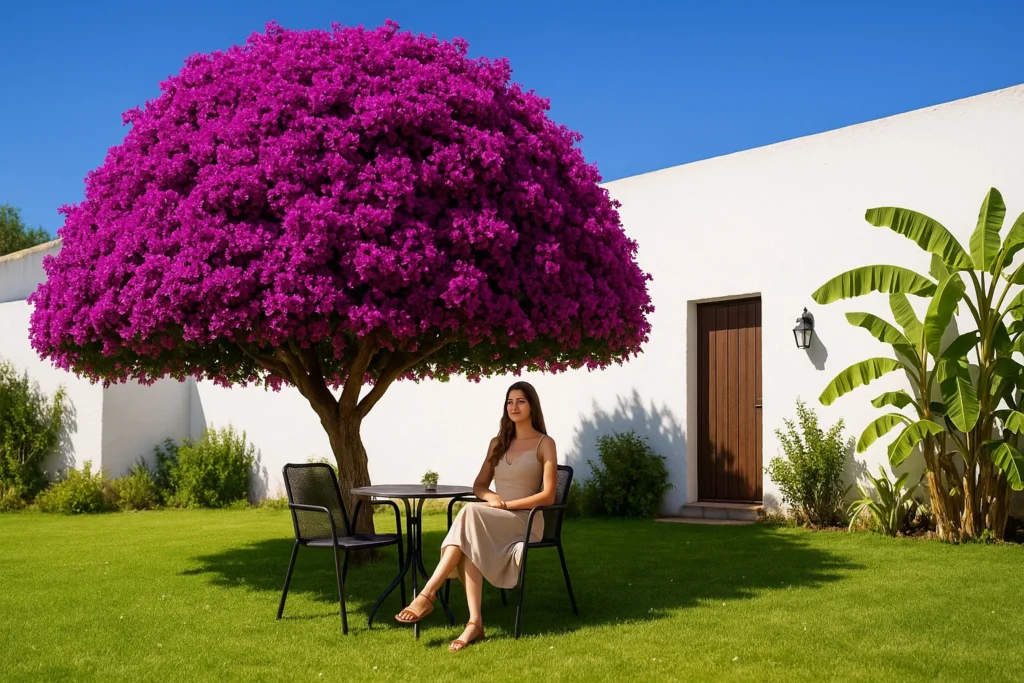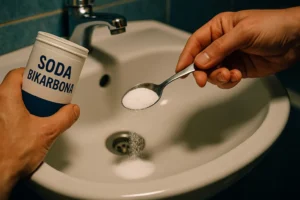
Bouganville is a plant that rewards perseverance. It is not one of those we nourish with tenderness and excessive care, indeed, it is quite the opposite. If we want to bring out its most spectacular side, we must establish limits, “challenge it” deliberately and offer them rigorous but caring care.
Bougainvillea tropical climbing plant originally from South America that now reigns supreme on the balconies of the whole Mediterranean, grows at best if it receives a lot of light, a little water and a little courage in gardening. Below, we will see how to cultivate a healthy and luxuriant bougainville that will transform every corner into an explosion of colors.
Bougainvillea – Optimal growth conditions: light, heat and dry soil
To successfully cultivate Bouganville, it is essential to know its basic needs. It is a plant that needs at least 6-8 hours of direct sunlight per day. If we do not provide it, it will only develop a luxuriant foliage and we will wait for the flowers in vain.


Irrigation must be moderate and not very frequent. Bouganville is extremely resistant to drought, but is very sensitive to excessive humidity, which can quickly cause the rot. In the pots, the substrate must have good drainage and must be equipped with drainage holes. We only water when the upper layer of the ground is completely dry: this means watering less, but more abundantly.
Bougainvillea – Pruning: a tool for controlling and promoting flowering
The secret for lush flowering lies in pruning. Bougainvillea develops floral structures (Brattee) at the ends of the young shoots, so it is necessary to regularly stimulate its branching. The main pruning is carried out in winter or early spring, when the plant is still in the dormant phase.


After each flowering cycle, carry out a slight corrective pruning and, in the summer, do not neglect the top of the tips, since this promotes the development of lateral sprouts and consequently more flower points. We always use sharp and disinfected tools and, for larger plants, if necessary we also use a saw.
Bougainvillea – fertilization: targeted nutrition, non -pampering
Bougainvillea does not need large quantities of nutrients, but of a balanced and targeted fertilizer, with more phosphorus and potassium (ideal ratio 5-10-10). Nitrogen, which stimulates the growth of the leaves, should be used in minor quantities, otherwise we will only get green mass instead of flowers.


In the spring, add bone flour and, from the beginning of spring until the end of summer, use water -soluble fertilizers once a month suitable for flower plants. In summer the plant can be further strengthened with the algae extract, which stimulates the immune system. In autumn, move on to slowly release fertilizers to prepare the plant to the winter dormancy period.
If we want to bring our cultivation to a higher level, we can keep track of data: the date of fertilization, the product used and the response of the plant. This will make it easier to plan care in future seasons.
Irrigation: less is better
Most of the errors in the care of bougganville occur during irrigation. In its natural environment, this plant is used to the alternation of dry and rainy periods. In practice, this means that we only water when the substrate is dry, both in the vessels and in the earth.


For pot plants it is recommended to water abundantly, but not frequently. Good drainage is mandatory; It is almost essential to have draining materials on the bottom of the pot. During the hottest months of the summer we check the humidity of the substrate every day, but we do not rely only on the dry surface layer: we perform tests deeper.
Drop irrigation is ideal for garden species, since it allows a controlled water intake and avoids wetting the leaves, thus reducing the risk of diseases.
Diseases and parasites: prevention is fundamental
Bouganville is generally a fairly resistant plant, but it can be attacked by parasites such as aphids, ladybugs and mites. They prefer to proliferate in warm and dry conditions, for this reason we monitor them regularly, especially on the lower page of the leaves.
See also




The initial measures include insecticide soaps or wipes soaked in ethanol and, in the most serious cases, appropriate phytoopharmaceutical preparations are used. Among the diseases, the most common are the radical rot, which is a direct consequence of excessive watering, and the gray mold on the bracts, which occurs with prolonged humidity.
The best forms of prevention are the air flow between the plants, the regular pruning and the correct spacing between the plants.
Examples of good practices
Experience in Mediterranean countries such as Spain shows that regular pruning and monthly fertilization with fertilizers richer in phosphorus drastically increase the amount of flowers. In urban contexts such as New York, those who cultivate on the balconies manage to obtain a flowering that lasts almost until late autumn, thanks to the help of a drop system and a planned fertilization.


These examples show that buganvillea can be successfully cultivated even outside its natural environment: the key lies in adaptation and constancy.
Conclusion: cultivate bougganville as an exercise in horticultural discipline
To cultivate bougganville it is not only enough enthusiasm: planning and constancy are needed. When we understand that the plant prosperous better in intense light conditions, with limited water, regular pruning and precise nutrition, it becomes clear that it is a plant that rewards diligence.
Bouganville is not a suitable plant for those looking for immediate results. It is a plant for far -sighted gardeners, for those who understand that true beauty often emerges from a slight discomfort.
But once it flourished, it exceeds all expectations, becoming the main decoration of a garden, a terrace or a balcony. An explosion of colors that reminds us that sometimes a plant, like life, needs to be “put on the corner” to show its true potential.





